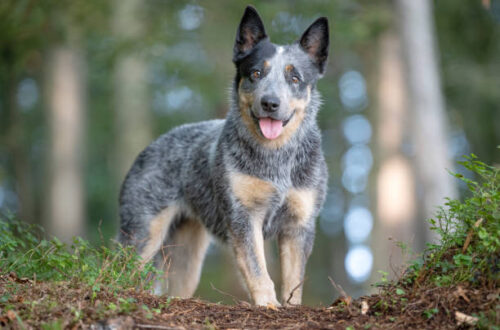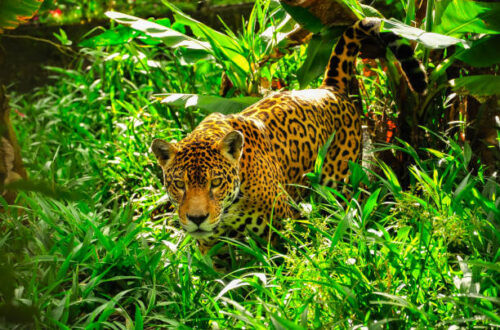The allure of owning an exotic or potentially dangerous pet can be strong. Perhaps it’s the fascination with the untamed, the desire to connect with something truly unique, or even a misguided sense of status. Beneath that captivating idea is a complex web. It includes ethical concerns, safety issues, and legal challenges. There is also a lot of responsibility involved.
So, the big question is: Is it truly safe to keep dangerous pets? The short answer, as you might suspect, is a resounding “it depends”—but with a heavy emphasis on the “it depends.” This isn’t a simple issue. To navigate this complex territory, you need to understand the animals involved, the owner’s abilities, and the possible risks to the pet and the community.
Defining “Dangerous Pets”: What Are We Talking About?
Before we go any further, let’s clarify what we mean by “dangerous pets.” This isn’t just about a grumpy cat or a dog that hasn’t been properly trained. We’re discussing animals that can cause serious harm or death. They might do this because of their size, strength, venom, hunting instincts, or unpredictable behavior. This category can include:
- Large Carnivores: Lions, tigers, bears, wolves, and other big cats and canids.
- Primates: Monkeys, apes, and other non-human primates, which can be strong, possess sharp teeth and nails, and exhibit unpredictable behavior, especially as they mature.
- Large Reptiles: Crocodiles, alligators, large constrictor snakes (like pythons and anacondas), and venomous snakes.
- Venomous Creatures: Spiders (like black widows and brown recluses), scorpions, and certain amphibians.
- Large Birds of Prey: Eagles, hawks, and owls, which have sharp talons and beaks.
- Certain Dog Breeds (in some contexts): While domestic dogs, in general, are not considered “dangerous” in the same vein as the animals listed above, certain breeds with a history of aggression or requiring specialized handling might be subject to specific regulations.
It’s crucial to understand that the “danger” isn’t always malicious. It can stem from the animal’s natural instincts, their need for specific and often demanding care, or simply their physical capabilities.
The Allure and the Reality: Why People Keep Dangerous Pets
There are various reasons why individuals are drawn to keeping dangerous pets:
- Fascination and Admiration: A genuine interest in exotic animals and their unique characteristics.
- Status Symbol: Owning a rare or dangerous animal can be seen as a way to project power or uniqueness.
- Misguided Beliefs: Some people may underestimate the challenges and risks involved or believe they can “tame” a wild animal.
- Conservation Efforts (in rare, regulated cases): Occasionally, individuals or organizations might keep endangered animals for breeding programs under strict permits.
However, the reality of keeping such animals often starkly contrasts with these initial motivations. These pets typically require:
- Specialized Housing: Secure enclosures that mimic their natural habitat and prevent escape, often requiring significant space and financial investment.
- Specific Diets: Providing the correct nutrition can be complex and expensive, sometimes involving live prey.
- Expert Veterinary Care: Finding vets experienced with exotic animals can be challenging and costly.
- Extensive Knowledge and Experience: Understanding the animal’s behavior, needs, and potential risks is paramount.
- Significant Time Commitment: Caring for these animals is often a full-time job.
The Safety Concerns: A Multi-faceted Risk
The safety concerns associated with keeping dangerous pets extend far beyond just the owner. They encompass:
Risk to the Owner
- Injury: Bites, scratches, constriction, envenomation, and other injuries can occur even with seemingly docile animals. Wild animals retain their instincts, and even captive-bred individuals can act unpredictably, especially when stressed, ill, or feeling threatened.
- Disease Transmission: Exotic animals can carry diseases that are transmissible to humans (zoonotic diseases), some of which can be serious or even fatal.
- Psychological Impact: The stress of caring for a potentially dangerous animal and the constant vigilance required can take a toll on mental health.
Risk to the Public
- Escape: Even with the most secure enclosures, there’s always a risk of escape. A loose dangerous animal can pose a significant threat to the safety of the community, including other pets and livestock.
- Indirect Harm: Improper disposal of waste or remains from exotic animals can introduce pathogens into the environment.
Risk to the Animal
- Inadequate Care: Many owners lack the knowledge, resources, or commitment to provide the specialized care these animals need, leading to malnutrition, illness, stress, and premature death.
- Unsuitable Environment: Captivity can be detrimental to the well-being of wild animals, depriving them of their natural behaviors and social structures.
- Abandonment: When owners realize the immense responsibility and challenges involved, they may resort to illegal abandonment, putting the animal and the environment at risk.
Legal Landscapes: Navigating the Regulations
The legality of owning dangerous pets varies significantly depending on location. Laws can differ at the national, state/provincial, and even local levels. These regulations might include:
- Complete Bans: Certain species may be entirely prohibited from private ownership.
- Permitting Requirements: Owners may need to obtain special permits, demonstrating their knowledge, experience, and ability to provide adequate care and secure housing.
- Insurance Requirements: Some jurisdictions may require owners to carry liability insurance to cover potential damages or injuries caused by their pets.
- Specific Housing Standards: Regulations may dictate the size, security, and features of enclosures.
- Microchipping and Registration: Tracking and identifying dangerous animals may be mandatory.
It is absolutely crucial to thoroughly research and understand the laws in your specific area before even considering acquiring a potentially dangerous pet. Ignorance of the law is not an excuse, and illegal ownership can lead to severe penalties, including fines, confiscation of the animal, and even jail time.
Ethical Considerations: A Moral Maze
Beyond the legal aspects, there are significant ethical considerations surrounding the keeping of dangerous pets:
- Animal Welfare: Is it ethical to confine a wild animal to a captive environment, regardless of how spacious or well-maintained? These animals have evolved to roam freely and engage in natural behaviors that are often impossible to replicate in captivity.
- Public Safety: Does the individual’s desire to own an exotic pet outweigh the potential risk to the safety and well-being of the community?
- Conservation Impact: While some captive breeding programs can contribute to conservation efforts, the demand for exotic pets can also fuel illegal wildlife trade, which decimates wild populations and disrupts ecosystems.
- The “Wild Animal as Pet” Paradigm: Is it inherently wrong to view and treat wild animals as pets, potentially undermining respect for their natural roles and needs?
These ethical questions often have no easy answers and involve weighing different values and perspectives.
The Importance of Education and Responsibility
If someone decides to own a dangerous pet (where it’s legal), they must prioritize education and responsible ownership. Warnings and rules exist for a reason. This includes:
- Thorough Research: Understanding the specific needs, behavior, and potential risks associated with the chosen species.
- Expert Consultation: Seeking guidance from experienced keepers, veterinarians specializing in exotic animals, and animal behaviorists.
- Secure and Appropriate Housing: Investing in enclosures that meet or exceed legal requirements and ensure the safety of both the animal and the public.
- Proper Diet and Veterinary Care: Providing the necessary nutrition and regular health checks by qualified professionals.
- Emergency Planning: Having a plan in place for potential escapes, natural disasters, or situations where the owner can no longer care for the animal.
- Liability Insurance: Protecting oneself and others in case of accidents or injuries.
- Ongoing Learning: Continuously educating oneself about the animal’s evolving needs and best practices in captive care.
However, even with the most diligent and responsible owner, the inherent risks associated with keeping dangerous pets can never be entirely eliminated. Wild animals are unpredictable, and unforeseen circumstances can always arise.
Alternatives to Dangerous Pets: Finding Your Wild Connection
If you love exotic animals but worry about safety and ethics, there are many other ways to engage with nature:
- Supporting Conservation Organizations: Contributing to the protection of wildlife and their habitats in the wild.
- Visiting Reputable Zoos and Wildlife Sanctuaries: Observing exotic animals in professionally managed environments that prioritize their welfare and conservation.
- Volunteering at Animal Shelters or Rescue Organizations: Making a difference in the lives of domestic animals in need.
- Engaging in Wildlife Photography or Observation: Appreciating animals in their natural habitats from a safe distance.
- Learning About Wildlife Through Documentaries and Books: Expanding your knowledge and understanding of the animal kingdom.
These alternatives offer a way to appreciate the beauty and wonder of wildlife without the inherent risks and ethical dilemmas associated with private ownership of dangerous animals.
FAQs: Your Burning Questions Answered
Here are some frequently asked questions about keeping dangerous pets:
Q: Is it legal to own a tiger in the United States? A: It varies by state and local laws. Some states have outright bans, while others have permitting requirements. It’s crucial to check the specific regulations in your area.
Q: Can you truly “tame” a wild animal like a lion? A: While some individuals may appear to have a close bond with a wild animal, their natural instincts remain. These animals are not domesticated and can exhibit unpredictable and potentially dangerous behavior at any time.
Q: What are the risks of owning a large snake like a python? A: Large constrictors pose a risk of suffocation, although this is more commonly a threat to their prey. They need secure enclosures to stop escapes. Their size and strength can make them hard to handle and even dangerous. They also have specific environmental needs that can be difficult to replicate in captivity.
Q: Are primates like monkeys good pets? A: Primates are highly intelligent and social animals with complex needs that are extremely difficult to meet in a typical household environment. They can also be unpredictable, strong, and carry diseases transmissible to humans. As they mature, they can become aggressive and destructive, making them unsuitable as pets.
Q: What should I do if I encounter an escaped exotic animal? A: Do not approach the animal. Maintain a safe distance and immediately contact your local animal control, police department, or wildlife authorities. Provide them with the location and description of the animal.
Q: Why do some people argue for the right to own exotic pets? A: Arguments often include personal liberty, the belief that they can provide adequate care, or the idea that captive breeding can contribute to conservation (though this is often debated and requires strict regulation).
Q: What are the signs that a captive wild animal is not thriving? A: Signs can include changes in appetite, lethargy, aggression, self-mutilation, repetitive behaviors (stereotypies), and poor physical condition.
Q: What is the role of responsible breeders in the exotic pet trade? A: Responsible breeders care for their animals’ health and well-being. They follow all regulations and teach potential buyers about the specific needs of the species. However, even with responsible breeding, the ethical concerns about keeping wild animals in captivity remain.
Q: How can I learn more about the regulations in my area? A: Contact your local animal control, state/provincial wildlife agency, and review your city/county ordinances.
Conclusion: Tread Carefully in the Wild Realm of Pet Ownership
The decision to keep a dangerous pet is not one to be taken lightly. It demands a thorough understanding of the significant responsibilities, potential risks, and ethical considerations involved. While the allure of owning an exotic animal may be strong, the reality often presents profound challenges for both the owner and the animal.
Prioritizing safety, respecting wildlife, and adhering to legal regulations are paramount. For most individuals, the inherent dangers and complexities associated with keeping these animals far outweigh the perceived benefits. Finding new ways to connect with nature can be safer and more ethical for wildlife lovers.





